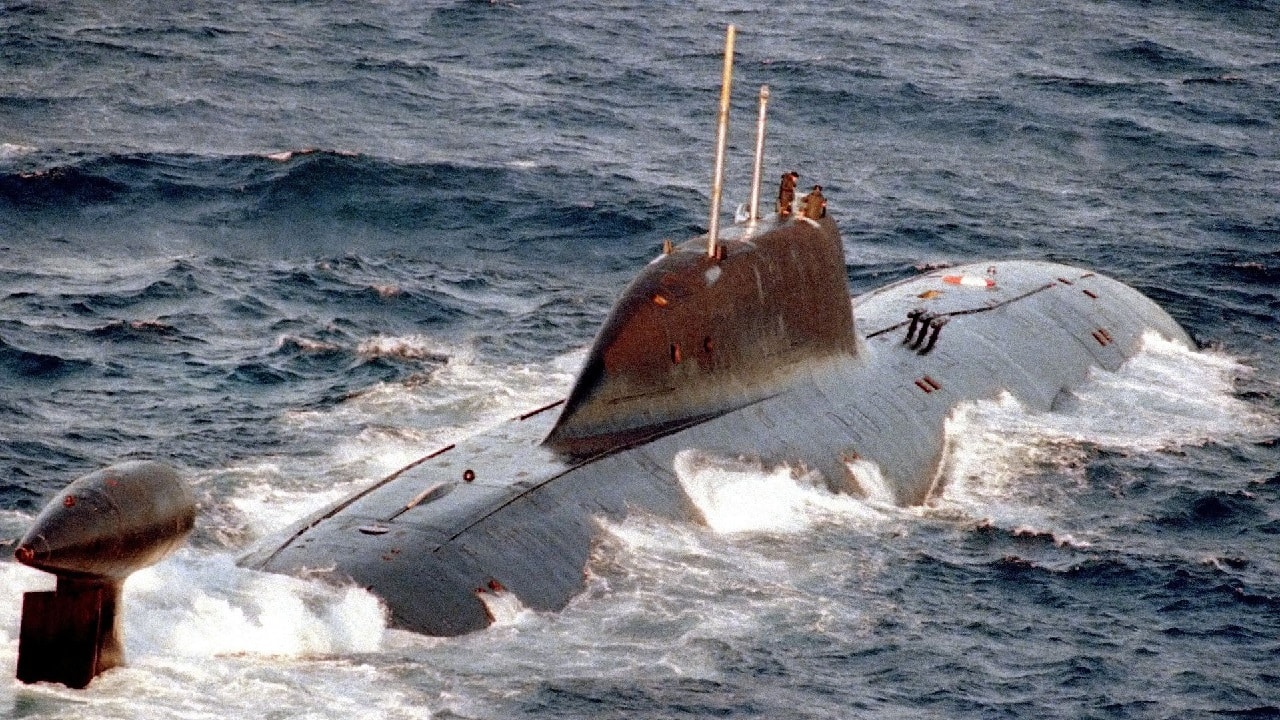The arrival of the Soviet Union’s Akula-class attack submarines in the 1980s was a closely followed and disturbing discovery at the Pentagon. The class’ technology prompted concerns that Akula boats might actually contain some kind of undersea superiority or overmatch.
(Subscribe to 19FortyFive‘s New YouTube Channel here.)
Why the Akula Was Feared
A close, detailed analysis would, of course, be needed to determine if this were, in fact, true.
What was known was that the arrival of the Akula’s was considered quite “concerning” to the Pentagon in the late 1980s. The reason was explained in detail in a significant report in Science.org as far back as 1989 called “Quiet Soviet Subs Prompt Concern.”
The text quotes defense expert Norman Polmar saying, “The launch of the first submarine in 1985 shook everyone up (in the West), as Western intelligence agencies had not expected the Soviet Union to produce such a boat for another 10 years.”
Specifically, the essay quotes Naval experts telling lawmakers years ago that the existence of the Akula “threatens the survivability of our Carrier Task Forces.” The expert panel also questioned the ability of the U.S. Navy to support maritime combat in the European theater given the threat to surface ships posed by the Akula.
The Weapons
The Akulas are quite lethal with four torpedo tubes and RPK-2 and RPK-6 missiles, and according to a Popular Mechanics article in 2017, contained a “double hull” system with an inner pressure hull and outer “light” hull. “This allows more freedom in the design of the exterior hull shape, resulting in a submarine with more reserve buoyancy than its Western analogs,” Popular Mechanics explains.
The Akula’s torpedo tubes can, much like Russia’s Kilo-class submarines, use torpedo tubes to deploy mines.
New Versions of the Sub Take Shape
Most of the advanced Akula submarines are the Akula II and Akula III, which have increased quieting technologies. The most advanced Russian Akula, according to Popular Mechanics, is the only Akula III in existence, called the Gephard.
Along with its quieting technology, the Akula-class is known for a once mysterious innovation known as “System Obnarujenia Kilvaternovo Sleda,” a special wake detection system designed to identify the wake left by an enemy submarine.
The SOKS hydrodynamic sensors detect changes in temperature and salinity, among other things, to determine the presence of enemy submarine activity.
It May Have Inspired the U.S. Navy
It would seem feasible that the arrival of the Akulas, and the Akula IIs in particular, may have provided the inspiration for the US Navy’s extensive innovations built into the Seawolf and Virginia-class attack submarines.
Undersea superiority is something the U.S. Navy has long thought to maintain, yet there may have been lapses or periods wherein Soviet and Russian advances motivated the U.S. Navy and its industry partners to massively accelerate new quieting and submarine detection innovations.
Kris Osborn is the Military Affairs Editor of 19FortyFive and President of Warrior Maven – Center for Military Modernization. Osborn previously served at the Pentagon as a Highly Qualified Expert with the Office of the Assistant Secretary of the Army—Acquisition, Logistics & Technology. Osborn has also worked as an anchor and on-air military specialist at national TV networks. He has appeared as a guest military expert on Fox News, MSNBC, The Military Channel, and The History Channel. He also has a Masters Degree in Comparative Literature from Columbia University.

